but there's actually an incredibly cheap & easy way to drastically improve both the range & resolution of LWIR. It's really cool stuff.
What is this cheap and easy method?
but there's actually an incredibly cheap & easy way to drastically improve both the range & resolution of LWIR. It's really cool stuff.
That just tells me that these MWIR sensors aren't good enough then. There is inherent physics that scanning range is shorter than focused tracking range. However, If MWIR has good resolution, digital zoom can allow for simultaneous track and scan out to pretty good range (tactically relevant) as with f-35's DAS.
Constant FoV track and scan, MLD in one system rather than this awkward UV based sensors just for MLD on top of IR based apertures.
I'd rather not say.What is this cheap and easy method?
No, neither LWIR or MWIR can see through cloud. With thick cloud they both get absorbed.Uh, no. LWIR can see through clouds, whereas MWIR cannot, hence as to why LWIR is used by firefighters, for example. MWIR has better resolution, albeit in ideal conditions, but there's actually an incredibly cheap & easy way to drastically improve both the range & resolution of LWIR. It's really cool stuff.
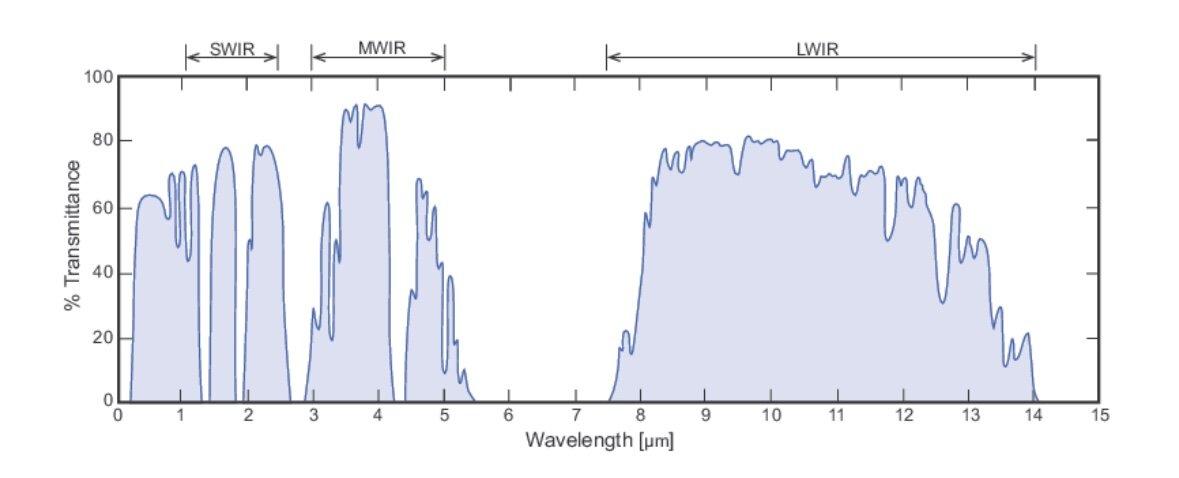

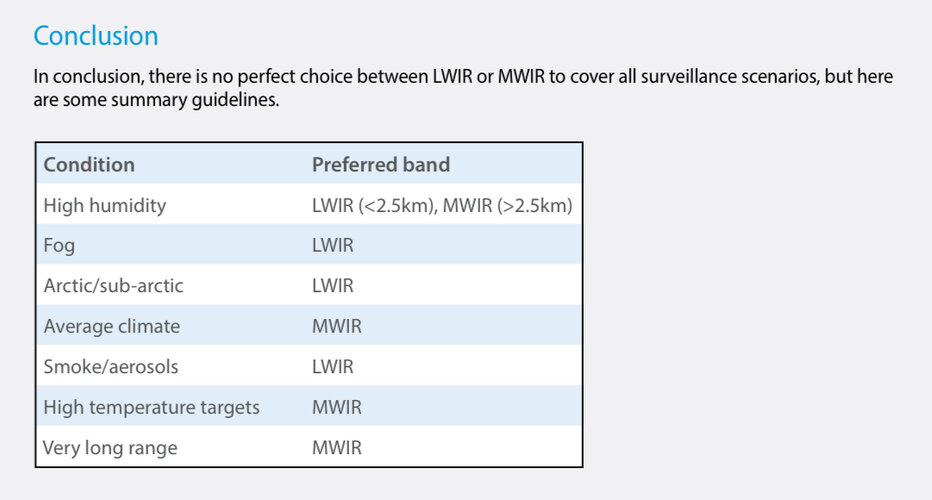
N036L arrays are radars first, IFF and EW on top.Front IRST unit of Su-57, 101KS-V most likely not dual band because windows transparent to LWIR are usually germanium which is a dark color and opaque in visible spectrum, or for dual-band MWIR/LWIR, zinc selenide which is yellow color also mostly opaque in visible spectrum. While the 101KS-V bulb is clear and transparent in visible spectrum which probably means MWIR only system.
The L-band IFF antennas aren't unique to Su-57, similar to Band 2 arrays on other fighters.
Several reasons come to mind.That just tells me that these MWIR sensors aren't good enough then. There is inherent physics that scanning range is shorter than focused tracking range. However, If MWIR has good resolution, digital zoom can allow for simultaneous track and scan out to pretty good range (tactically relevant) as with f-35's DAS.
Constant FoV track and scan, MLD in one system rather than this awkward UV based sensors just for MLD on top of IR based apertures.
No, they are not.N036L arrays are radars
To be honest, I have a hard time believing N036L are radar array, they are active scanned array but they only has a single line of T/R modules arranged horizontally. That mean they can’t steer vertically. In other words, no ability to determine target altitude. Then with so few T/R working at such low frequency, the beamwidth would be something like 10-15 degrees which is quite unsuitable as fire control system, even value as early warning is somewhat dubiousN036L arrays are radars first
There was this rumour (hint?) with 12-14 a while back. Looking back, the rumoured delivery time checks out, perhaps also the number
A russian UAC or KnAAPO official, can't recall now, specifically said they have sufficient capacity to satisfy both VKS requirements and eventual export orders. Obviously KnAAPO has the capacity to produce at least several tens of airframes each year, be it Su-57, Su-35 or a mixture of both. I actually wanted to open a topic discussing the yearly combat aircraft production capacities of the major powers ie US, China and Russia, but considering how riled up, politically provocative and hostile certain western posters/moderators get whenever a discussion involving russian (or chinese) military capacities is attempted, i'll rather do that elsewhere at some point.And another question! I presume, the production capacity is still not that high enough to produce those for Algeria additionally to an increased batch for Russia this year! So Algeria first in order to satisfy a new customer or am I wrong?
A russian UAC or KnAAPO official, can't recall now, specifically said they have sufficient capacity to satisfy both VKS requirements and eventual export orders. Obviously KnAAPO has the capacity to produce at least several tens of airframes each year, be it Su-57, Su-35 or a mixture of both. I actually wanted to open a topic discussing the yearly combat aircraft production capacities of the major powers ie US, China and Russia, but considering how riled up, politically provocative and hostile certain western posters/moderators get whenever a discussion involving russian (or chinese) military capacities is attempted, i'll rather do that elsewhere at some point.
PS: Few years back there was a screenshot showing the planned KnAAPO production of i believe both Su-35 and Su-57 for the next several years, but of course can't find it now. @QuadroFX @paralay @flateric could you help if possible? Many thanks.
And another question! I presume, the production capacity is still not that high enough to produce those for Algeria additionally to an increased batch for Russia this year! So Algeria first in order to satisfy a new customer or am I wrong?
No, neither LWIR or MWIR can see through cloud. With thick cloud they both get absorbed.
You are both correct, but the original claim was generalizing that LWIR can see through cloud whereas MWIR cannot, and I think Ronny put out a great explanation for the problem at hand. That's enough to settle it.But with thin clouds, depending on what wavelengths they tend to absorb, different wavelengths can travel further. So there are cases where LWIR may be able to see things at distances MWIR cannot.
Oh, this one. WIthout going into same dispute over and over, i don't really see contents of the article as somehow exclusive, as array is multifunctional.
Simple anwer is that it is most certainly not used for fire control.To be honest, I have a hard time believing N036L are radar array, they are active scanned array but they only has a single line of T/R modules arranged horizontally. That mean they can’t steer vertically. In other words, no ability to determine target altitude. Then with so few T/R working at such low frequency, the beamwidth would be something like 10-15 degrees which is quite unsuitable as fire control system, even value as early warning is somewhat dubious
There is nothing to dispute here, the idea of usage of L-band arrays as a RADAR is a pure speculation that contradicts to the facts such as official information from the developers and configuration of the system, which, as Ronny correctly mentioned earlier, be it a RADAR, would have a horrible radiation pattern (i.e. the amount of radiation hitting the target and returning to the receiver) and zero resolution in elevation axis.Oh, this one. WIthout going into same dispute over and over, i don't really see contents of the article as somehow exclusive, as array is multifunctional.

The link you send as definitive doesn't really mean what you imply. No more than 101KS-O being DIRCM(which it most certainly is). But then, there is some.There is nothing to dispute here, the idea of usage of L-band arrays as a RADAR is a pure speculation that contradicts to the facts such as official information from the developers and configuration of the system, which, as Ronny correctly mentioned earlier, be it a RADAR, would have a horrible radiation pattern (i.e. the amount of radiation hitting the target and returning to the receiver) and zero resolution in elevation axis.
Might be from wikipedia, or from another forum, i do have it too. There is a more recent version floating around, though i think the 2023-2024 figures must be educated guesswork and probably well below the real figures.View attachment 759287
Hi, im new here. I had this picture saved on my phone and knew it would be useful someday. Not sure where i got it from though.
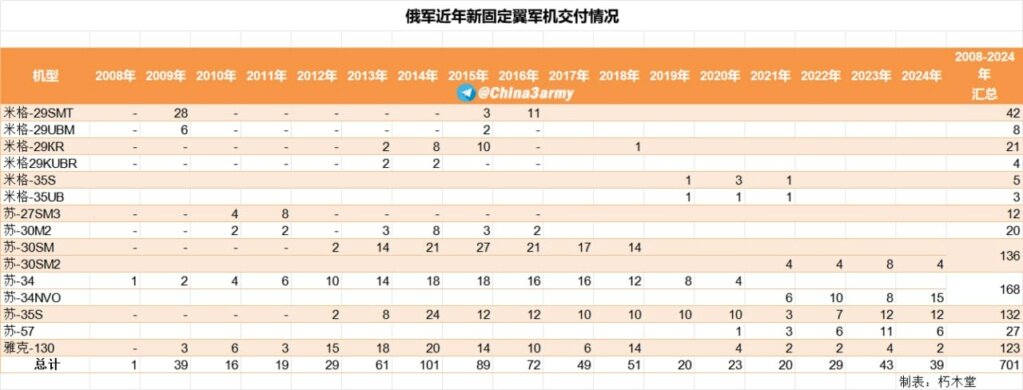
Russian sources stated that more than 10 were made in 2023. Let's assume twelve, a half of an regiment. It wouldn't surprise me that in 2024 they made 18 pieces, and in 2025 they will made 18-24. So even with 6 made it's still likely will be more than original plan of 12 in 2025.And another question! I presume, the production capacity is still not that high enough to produce those for Algeria additionally to an increased batch for Russia this year! So Algeria first in order to satisfy a new customer or am I wrong?
The article clearly describes the purpose of L-band AESA - IFF. If you can provide any official or reliable source that tells it's a RADAR, i will be glad to read it and change my opinion. Otherwise, it's just a speculation that contradicts to the known facts.The link you send as definitive doesn't really mean what you imply. No more than 101KS-O being DIRCM(which it most certainly is). But then, there is some.
Ofcourse they do! It's IFF for FCR! But this doesn't meant it's a radar. That's why it's called "АФАР L-диапазона" / "L-band AESA", and not a "РЛС L-диапазона" / "L-band RADAR".We know that all those arrays work under same system (and single central processing unit), with different functional subsystems having access to the same multifunctional arrays.
MFA doesn't mean RADAR.One of the whole points of 5th gen design(integrated digital architecture really) is that it allows AESAs work as MFAs(as opposed to the way they were plugged into 4th gen platforms until this point), provided they're physically capable of it.
Again, the existence of 2D-radars, all them are huge and powerful ground-based or ship-based - doesn't mean N036L is a RADAR too.There is a whole class of radars working in 2D. I don't understand the point of the argument that "there is no resolution in elevation axis" - it is normal for this class of radarsin the first place. Aircraft already has 3(4?) fire control radars, on top of 1(3) IRSTs.
And what source says L-band AESA on SU-57 has >twice of power of the similar system on Su-35?Estimation done by @Silentflanker gives very competitive ranges (comparable to full power of the main N036 array) against LO targets in same ~240 deg field, with very high scan rates. And this didn't come free - there is >twice the real estate (and weight, and power) used, compared to Su-35s IFF.
What literature, exactly? Official article says it's for IFF.There is significant basis under why all literature on the plane considers them as such.
But for normal early warning radar, if they are only 2D, then they would have decent horizontal angular accuracy. Whereas this L-band array would have bad horizontal angular accuracy and also no vertical accuracy.Simple anwer is that it is most certainly not used for fire control.
L band isn't fire control band, it's airspace control band.
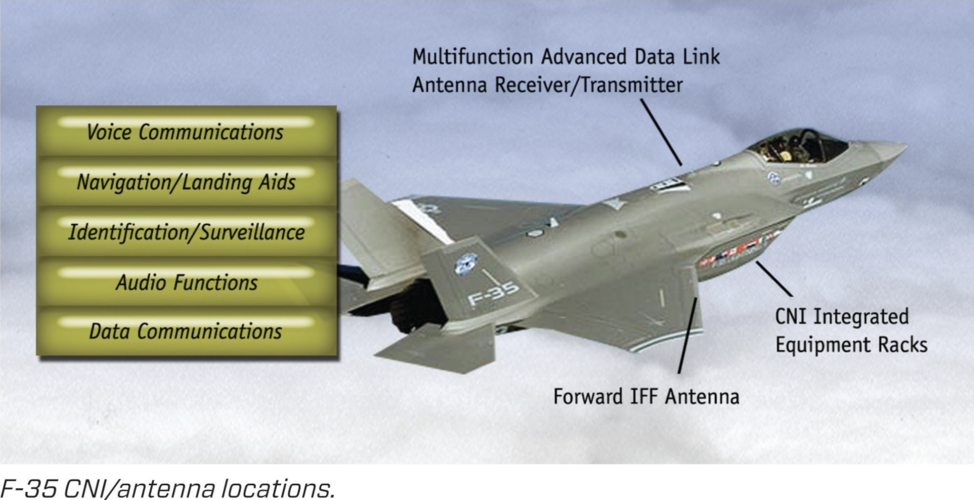
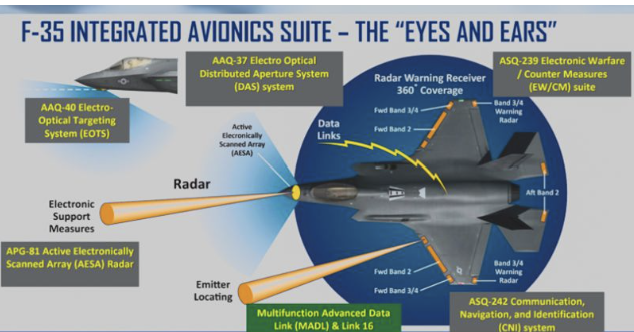
This in particular. I know that there are a small number of operational fifth gen types, but the Su-57 is the first non-US fifth gen fighter to be used in war. Perhaps the Su-57 that was damaged in a drone strike plays a role in why?What about showing off the SU-57s combat record over Ukraine?
N036L(name, ffs!) itself is AESA (one of) of N036 - which, together, is radar. Unlike, 4283, which is separate from N035 Radar, and lives under Sh-135 FCS.The article clearly describes the purpose of L-band AESA - IFF. If you can provide any official or reliable source that tells it's a RADAR, i will be glad to read it and change my opinion. Otherwise, it's just a speculation that contradicts to the known facts.
N036B had a badge saying X-band AESA, too. Not X-band radar.Ofcourse they does! It's IFF for FCR! But this doesn't meant it's a radar. That's why it's called "АФАР L-диапазона" / "L-band AESA", and not a "РЛС L-диапазона" / "L-band RADAR".
It means multiple functions performed by same array (often simlultaneously, through array or time/phase split), yes. But still, there are multiple.MFA doesn't mean RADAR.
E-2 series.Again, the existence of 2D-radars, all them are huge and powerful ground-based or ship-based - doesn't mean N036L is a RADAR too.
None, though you can compare exhibits. Just x2(or more) the number of longer and bulkier arrays on su-57, compared to Su-35s.And what source says L-band AESA on SU-57 has >twice of power of the similar system on Su-35?
It isn't official article. It's research paper, on a specific subject, describing solution from professional perspective of certain group of people.What literature, exactly? Official article says it's for IFF.
Algeria - the first foreign customer of the Su-57 will receive 12 fighters within two years
13.02.2025, 12:49
Photo: © press service of PJSC "UAC"
The Algerian Air Force plans to start operating Russian fifth-generation Su-57 fighters in 2025, according to Algérie solidaire.
"Algeria will become the second country south of the Mediterranean Sea after the state of Israel, which will operate fifth-generation combat aircraft," the report says.
According to the authoritative Algerian source "Sada El Juyush", the first six aircraft will be delivered in 2025, six more in 2026. The contract for the supply of 14 Su-57 fighters was allegedly concluded in 2021.
But back in 2019, the information resource MENA Defense reported that a contract was signed for the purchase of 14 Su-57 fighters by Algeria. The decision was made in the summer of 2019 after the visit of the Algerian delegation to the MAKS air show in Moscow.
During this visit, organized by the commander of the Air Force Major General Bumaiza, the Su-57 was inspected from all sides, and the former Algerian MiG-29 pilot became one of the few foreigners to test the Russian invisible plane on a simulator. It was he who "made the decision on the future of acquisitions after five years of procrastination and a waste of time".
In November 2024, at the Zhuhai Air Show, Rosoboronexport announced the signing of the first export contract for the Su-57E, without disclosing the name of the buyer. This statement caused surprise in expert circles, as it was previously assumed that the export of Su-57 would begin only after the fulfillment of orders for the Russian army planned until 2028. In addition, Western sanctions imposed after the start of the special military operation in Ukraine could affect the production of the Su-57, limiting access to some important technologies.
However, increasing the production rate of Su-57 to 12 aircraft per year starting from 2023 allows Russia to start export supplies this year and not only fulfill contractual obligations, but also attract additional funds to finance the further development of the Su-57 program. The version of aircraft delivered to Algeria may not be final and require modernization, especially in terms of engines, means of reducing radar visibility, on-board electronics and weapons.
Despite possible limitations in the initial configuration, the receipt of the Su-57 will have a significant impact on the capabilities of the Algerian Air Force. The aircraft will be integrated into the weapons system together with the upgraded Su-30MKA fighters in the SM2 variant. Even in the basic configuration, the Su-57 will significantly strengthen the combat potential of the Algerian Air Force in the face of growing competition from 4++ generation fighters, such as the French Rafale, Eurofighter and F-16V, as well as the presence of fifth-generation F-35 fighters in the region.
The head of Rosoboronexport Alexander Mikheev confirmed plans to start operating the Su-57 as the first foreign customer in 2025. The statement was made at the Aero India 2025 exhibition in Bangalore. The delivery of the Su-57E will be an important stage in the development of Russian-Algerian military-technical cooperation and will strengthen Russia's position in the global arms market.
This in particular. I know that there are a small number of operational fifth gen types, but the Su-57 is the first non-US fifth gen fighter to be used in war. Perhaps the Su-57 that was damaged in a drone strike plays a role in why?
And that's the way that it should be, imo. Like, why tip your hand?We may never know anything about the SU-57s real performance…
Interesting graphic.No, neither LWIR or MWIR can see through cloud. With thick cloud they both get absorbed.
But background like cloud and ground surface emit very little MWIR radiation so you have more contrast, and therefore you can detect target from longer distance (that is why FLIR are generally operate in MWIR).
LWIR is better for high altitude target because there is very few cloud at high altitude and you can also see very cool object with LWIR
View attachment 759276
View attachment 759277
View attachment 759278
Twz lol.Twz said in that article su57 production went down to just a few in 2024. But didn't provide any evidence for said conclusion.
Does anyone here know of any indication of that?
Just to illustrate that the issue isn't as black-&-white as it is usually seen, idk. No big deal.Then why mention it?
